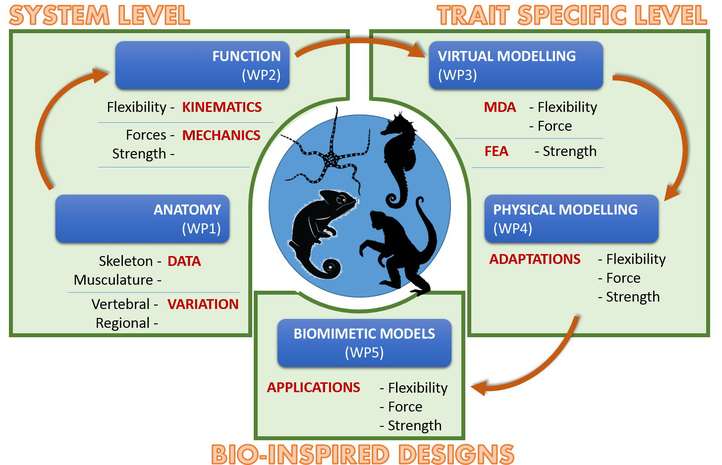Grasping onto evolution: testing hypotheses on adaptive evolution of animal prehensile systems
Project focus
Locomotory adaptations characterize structural variation in vertebrates. A highly specialized locomotory tool is that used for tail grasping. Despite being specialized, such systems evolved independently across lineages, including invertebrates. Patterns of convergences have been linked to grasping performance, however, causal relations between structural and functional variation in vertebral grasping systems remain largely unknown. Still, characterising this relationship not only allows to better understand to what degree these systems reflect adaptive evolution, but also opens up the potential for developing biomimetic grasping tools. With this project, we will test hypotheses on how convergent and clade-specific traits of prehensile systems influence grasping performance.

Keywords
evolution, prehensile, chamaeleons, grasping, seahorses, brittlestars, adaptive evolution, morphology, multibody dynamics analysis, computer simulations
Researchers: Allison Luger, Dominique Adriaens (PI), Anthony Herrel (Paris Museum), Michael Porter (Clemson University, USA), Vincent Vermeylen